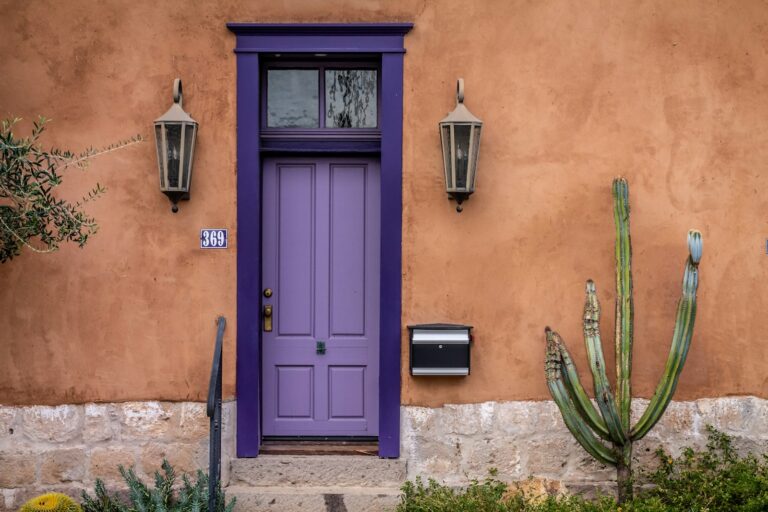What Does “Qué Linda” Mean in Spanish? A Complete Guide
Imagine you’re strolling through a vibrant market in Mexico, the air filled with the scent of fresh tortillas and the sound of lively chatter. Suddenly, a local vendor smiles warmly at you and says, “¡Qué linda!” You might wonder, “What does that mean?” Well, you’re in for a delightful surprise.
In Spanish, “qué linda” is a heartfelt compliment, often translating to “how lovely” or “how beautiful.” It’s a phrase that can light up your day, whether it’s directed at you, a breathtaking sunset, or even a charming piece of art. Knowing the meaning behind this phrase not only helps you understand the local culture better but also allows you to connect more deeply with Spanish speakers.
So, why not immerse and explore the beauty and warmth encapsulated in “qué linda”? By the end of this article, you’ll not only know what it means but also how to use it to spread a little more joy in your interactions.
Quick Reference: “Que Linda” at a Glance
Ever wondered how to express heartfelt admiration in Spanish? “Qué linda” is your go-to phrase, packing warmth and affection into just two words.
Basic Meaning and Usage
“Qué linda” translates to “how pretty,” “how lovely,” or “how beautiful” in English. Often used to appreciate someone’s appearance or the charm of something, it’s a simple yet powerful compliment. Whether admiring a friend’s new dress or a beautifully decorated room, these two words can brighten anyone’s day.
When to Use “Que Linda”
Need a quick phrase to express admiration? “Qué linda” works wonders. For instance, when someone asks, “Do you like my new skirt?” respond with, “Sí, ¡qué linda!” (Yes, how pretty!). This phrase adds a touch of sincerity to your compliment.
Another example: Imagine visiting a friend’s new home. You could say, “¡Qué linda casa que compraste!” (What a pretty house you bought). By using this phrase, you show genuine appreciation and make compliments feel more personal.
Common Variations
While “qué linda” is versatile, there are variations to keep your compliments fresh:
Here’s a simple table breaking down these variations:
Phrase | Translation | Contextual Use |
|---|---|---|
Qué linda | How pretty/lovely | General admiration |
Qué guapa | How beautiful | Often for people |
Qué bonita | How pretty | People and things |
Qué hermosa | How gorgeous | Grand appreciation |
Remember, these variations can help make your compliments more specific and meaningful. So, why not sprinkle some heartfelt “qué linda” moments in your conversations?
Breaking Down “Que Linda” in Spanish

“Que linda,” a warm and charming phrase in Spanish, translates to “how lovely” or “how beautiful” in English. The phrase carries a heartfelt compliment, making it perfect for expressing admiration. Let’s dive deeper into its components to help you understand and use it better.
Understanding “Que” in This Context
In the phrase “que linda,” the word “que” functions as an adverbial intensifier that emphasizes the adjective following it. “Que” can act as a conjunction, pronoun, or adverb in Spanish. Here, it heightens the impact, making the compliment feel more genuine and heartfelt. Ever wonder how a simple word can pack such a punch?
The Meaning of “Linda”
“Linda” translates to “pretty,” “lovely,” or “beautiful.” It describes people, objects, and experiences. For example, “Ella es linda” means “She is pretty,” and “La casa es linda” translates to “The house is lovely.” Isn’t it amazing how versatile one adjective can be?
Etymology of “Linda”
The origin of “linda” comes from the Germanic word “lind,” meaning “gentle” or “soft.” The Visigoths, a Germanic tribe, introduced it to Spanish during the Middle Ages. Knowing the roots adds a layer of depth to your understanding, doesn’t it?
“Linda” in Different Spanish-Speaking Regions
The use of “linda” can vary across Spanish-speaking regions. In Mexico, it’s a common way to compliment someone’s appearance. In Spain, “linda” may be used less frequently than “bonita”. Different regions might have subtle variations, adding a cultural twist to your compliments.
Region | Common Usage Example |
|---|---|
Mexico | “Qué linda eres!” |
Spain | “Eres muy bonita/linda.” |
Argentina | “¡Qué linda sos!” |
How to Use “Que Linda” Correctly
Ever wondered how to sprinkle a bit of Spanish charm into your compliments? Using “qué linda” can make your praise sound more heartfelt and sophisticated. Here’s how you can use it correctly in different contexts.
Complimenting Appearance
The phrase “qué linda” is a perfect way to compliment a woman’s appearance, particularly her face and body. Imagine your friend steps into a party looking stunning. You could say, “¡Qué linda te ves hoy!” (How lovely you look today!). This compliment goes beyond just saying “bonita” (pretty) by adding an extra layer of admiration. It’s like saying someone is not just pretty, but exceptionally beautiful.
Expressing Admiration for Objects or Situations
You can also use “qué linda” to admire objects or situations. Let’s say you visit someone’s newly decorated home. You might exclaim, “¡Qué linda es tu nueva casa!” (How lovely your new house is!). It conveys genuine delight and appreciation. Or on a sunny morning, you could say, “¡Qué linda mañana!” (What a lovely morning!). It’s a versatile phrase that adds warmth to any statement.
Gender Considerations: “Que Linda” vs. “Que Lindo”
Spanish adjectives must match the gender of the noun they describe. Use “qué linda” for feminine nouns and “qué lindo” for masculine nouns. For instance, if you want to compliment a handsome man, you would say, “¡Qué lindo te ves!” Similarly, to describe a beautiful day, which is a masculine noun (día), you say, “¡Qué lindo día!” Gender agreement in Spanish is essential, so remembering this small detail can make your compliments more accurate and appreciated.
Formal vs. Informal Usage
Contexts matter when choosing between formal and informal expressions. If you’re speaking to someone you’re close to, informal usage is more natural. For example, you could casually tell a friend, “¡Qué linda eres!” (How lovely you are!). In more formal settings, like a workplace event, use politeness. You could compliment a colleague’s presentation by saying, “¡Qué linda presentación!” (What a lovely presentation!). The flexibility of “qué linda” helps you navigate different social settings gracefully.
When you master these nuances, using “qué linda” becomes second nature, letting you express admiration with authenticity and charm.
Common Mistakes to Avoid with “Que Linda”
Understanding qué linda goes beyond translation. Here’s how to sidestep common pitfalls while expressing admiration in Spanish.
Pronunciation Errors
Saying qué linda correctly is crucial. Ensure “keh leen dah” rolls off your tongue smoothly. Mispronouncing this delightful phrase can dilute its impact. Imagine you’re at a Spanish-speaking friend’s birthday party, you say “koh” instead of “keh,” and they giggle, politely correcting you. Don’t stress, just try again with confidence and clarity.
Misusing Gender (Linda vs. Lindo)
Spanish revolves around gender agreements. Linda is for feminine nouns and lindo for masculine ones. Mixing these might lead to awkward compliments. Picture complimenting a friend’s male dog with “qué linda,” only to be met with confusion. Switch to “qué lindo” and watch them beam with pride.
Overuse or Inappropriate Contexts
Sprinkling compliments indiscriminately can feel insincere. Use qué linda in meaningful moments. For instance, while admiring a sunrise with friends, exclaim qué linda! The phrase might lose its charm if repeated endlessly, like calling every passing cloud qué linda during a hike. Reserve it for moments that truly deserve the sentiment.
Misinterpreting the Intensity of the Compliment
Qué linda carries warmth and admiration. Understand its intensity to avoid awkward situations. Using it casually with a co-worker’s report might seem odd, while it suits perfectly when admiring their dedication with qué lindo trabajo (nice job). Gauge the weight of your words, like saving an exquisite compliment for your partner’s heartfelt gesture.
Here’s a quick reference on gender usage:
Gender | Singular | Plural |
|---|---|---|
Feminine | Qué linda (e.g., dress) | Qué lindas (e.g., flowers) |
Masculine | Qué lindo (e.g., sunset) | Qué lindos (e.g., dogs) |
Master qué linda by considering these tips, enriching your Spanish compliments with authenticity and charm.
“Que Linda” Across Spanish-Speaking Countries

Ever heard someone drop a casual “qué linda” and wondered how this sweet phrase transcends borders? Let’s jump into how different Spanish-speaking areas use and cherish this expression.
Usage in Mexico
In Mexico, “qué linda” pops up everywhere, conveying admiration for people, places, or objects. Picture this: You’re strolling through Mexico City, spotting a beautifully decorated house. You might hear, “¿Viste esa casa? ¡Qué linda!” Translation: “Did you see that house? How beautiful!” It’s a simple yet heartfelt way to show appreciation.
South American Variations
South America adds its unique flavor to “qué linda”. In Cuba, there’s an endearing twist — the phrase frequently praises Cuba itself. Imagine a Cuban local, brimming with pride, exclaiming, “¡Qué linda es Cuba!” or “How beautiful Cuba is!” Other South American countries, like Argentina and Chile, use it just like Mexico, to compliment anything pretty. Ever visited a stunning beach in Chile? Expect to hear, “¡Qué linda playa!”
How It’s Used in Spain
While “qué linda” may be less common in Spain compared to “qué bonita” or “qué hermosa”, its affection remains the same. Spaniards might say, “¡Qué linda vista!”, marveling at a scenic view. It’s a warm expression of beauty and admiration. So next time you’re enjoying a sunset in Spain, don’t hesitate to share your feelings with “¡Qué linda!”
Caribbean Spanish and “Que Linda”
In Caribbean Spanish, “qué linda” holds a special charm. It’s frequently used in Puerto Rico and the Dominican Republic. Picture yourself in Puerto Rico, someone spots a lovely flower and says, “¡Qué linda flor!”, or “What a pretty flower!” In these regions, the expression captures the vibrant, lively spirit of the culture, enveloping you in its warmth.
Takeaway: This charming phrase, “qué linda”, wraps admiration in a neat, affectionate package, varying slightly but universally spreading warmth across Spanish-speaking regions. So, whether you’re in Mexico, Cuba, Spain, or the Caribbean, know that “qué linda” is your go-to phrase for a heartfelt compliment.
Similar Expressions to “Que Linda”
Learning the nuances of Spanish compliments can be a delightful experience. Understanding expressions like “qué linda” enhances your ability to connect with Spanish speakers emotionally and culturally. Let’s explore some similar expressions and their applications.
“Que Bonita”: Differences and Similarities
Wondering about the interchangeability of “qué linda” and “qué bonita”? Both translate to “how pretty” or “how lovely,” but there are subtle differences. “Que bonita” is more general, often used to describe anything pleasing to the eye, like a dress, a view, or a painting. On the other hand, “qué linda” carries a warmer, more affectionate tone and is frequently used to compliment people or pets.
For example:
“Que Hermosa”: When to Use It
Considering a stronger compliment? “Que hermosa” means “how beautiful” or “how gorgeous.” This phrase conveys a higher degree of admiration and can imply an emotional or even seductive undertone. It’s perfect for moments when you want to emphasize someone or something’s striking beauty.
For instance:
Male Equivalents: “Que Guapo” and Others
What about compliments for males? Spanish offers terms like “qué guapo,” meaning “how handsome.” It’s a common compliment for men, enhancing their appearance while maintaining a certain charm. Another option is “qué atractivo,” which translates to “how attractive,” and hinges more on the overall appeal rather than just looks.
Examples include:
Understanding these expressions prepares you to compliment authentically in various contexts, establishing stronger, more personable connections with Spanish speakers.
Mastering “Que Linda”: Tips for Spanish Learners

You’re diving into the expressive world of Spanish compliments, and “que linda” is a stellar start. This phrase translates to “how beautiful” or “how lovely,” making it a heartfelt way to appreciate someone or something.
Pronunciation Guide
Getting the pronunciation right will make your compliments sound genuine. “Que” sounds like “keh” with a soft “e.” “Linda” comes across as “leen-dah,” with a slight emphasis on “dah.”
Stress and Intonation Tips
Nail the stress and intonation to convey sincerity. Put the stress on “linda” to highlight admiration. A rising intonation on “linda” helps express your genuine feelings.
Common Pronunciation Mistakes to Avoid
Avoid these pitfalls to ensure clarity:
Context Clues: When “Que Linda” Is Appropriate
Knowing when to use “que linda” enhances your connection with Spanish speakers. It’s perfect for complimenting a beautiful dress, a scenic view, or even a captivating story. Use it to brighten someone’s day by appreciating their efforts or appearance.
Scenario | Example Sentence |
|---|---|
Complimenting Appearance | “¡Que linda eres!” (You’re so lovely!) |
Admiring Scenery | “¡Que linda vista!” (What a lovely view!) |
Praising a Work | “¡Que linda pintura!” (What a beautiful painting!) |
Practice Dialogues and Example Sentences
Practice makes perfect. Here are some dialogues to get you started:
Dialogue 1:
- You: “¡Que linda estás hoy!”
- Friend: “Gracias, me alegra que te guste mi vestido.”
- You: “¡Que linda esa canción!”
- Musician: “¡Muchas gracias! La compuse anoche.”
These examples and tips will help you master “que linda” and use it confidently in various contexts.
Conclusion: Embracing “Que Linda” in Your Spanish Vocabulary
Adding “qué linda” to your Spanish vocabulary can truly enrich your interactions. It’s a simple yet powerful way to express admiration and connect with others on a deeper level. With the variations and tips you’ve learned, you’ll be able to use these compliments confidently and appropriately in different contexts.
Remember, practice makes perfect. Don’t hesitate to use these phrases in your conversations. The more you use them, the more natural they’ll feel. So go ahead and spread some positivity with your new language skills!
Frequently Asked Questions
What does “qué linda” mean?
“Qué linda” translates to “how lovely” or “how beautiful” in English. It is used to offer heartfelt compliments, often to women or girls.
How do I use “qué linda” effectively?
To use “qué linda” effectively, make sure to say it genuinely and in appropriate social settings where compliments are welcomed.
What’s the difference between “qué linda” and “qué bonita”?
Both mean “how beautiful,” but “qué linda” is often more affectionate, while “qué bonita” is more straightforward.
When should I use “qué hermosa” instead of “qué linda”?
Use “qué hermosa” to emphasize beauty on a more grandiose or formal level, often in more poetic or intense situations.
Are there male equivalents to “qué linda”?
Yes, for men, you can use “qué guapo” (how handsome) or “qué atractivo” (how attractive).
Can I use “qué linda” in professional settings?
While “qué linda” is generally reserved for personal interactions, it can be used in professional settings if the atmosphere is informal and the compliment is appropriate.
How do I pronounce “qué linda” correctly?
“Qué” is pronounced like “kay,” and “linda” is pronounced like “leen-dah.” Practice stressing the first syllable of “linda.”
What are common mistakes to avoid when using “qué linda”?
Avoid using it sarcastically or in inappropriate contexts where compliments may not be welcome.
Are there variations of “qué linda” for different situations?
Yes, besides “qué linda,” you can use “qué guapa,” “qué bonita,” and “qué hermosa” depending on the formality and context.






